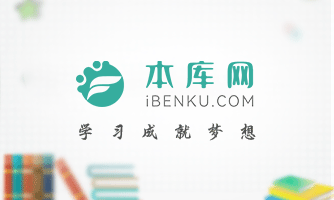pep小升初英语考试重点全在这儿了
小升初英语该怎么复习?相比这个难题难倒了不少家长,今天先生我整理一份小升初英语复习重点,来帮助大家复习英语!小编在这里整理了相关知识,快来看看吧!
pep小升初英语考试重点全在这儿了
小升初英语复习重点
第一部分:48个国际音标教学(学会根据音标读单词)
1、语音:元音的发音
五个元音字母:AEIOU
12个单元音:长元音:/ɑ:/,/ɔ:/,/ə:/, /i:/,/u:/
短元音:/æ/ /e/ /i/ / ɔ / /∧/ /u/ /ə/
2、词汇:词汇量,近反义词 3、句子:大小写,标点符号
第二部分:语法知识
一、名词:名词单复数,名词的格
(一)名词单复数
1.一般情况,直接加-s,如:book-books,bag-bags, cat-cats, bed-beds
2.以s. x.sh. ch结尾,加-es,如:bus-buses,box-boxes, brush-brushes, watch-watches
3.以“辅音字母+y”结尾,变y为i, 再加-es,如:family-families,strawberry-strawberries
4.以“f或fe”结尾,变f或fe为v, 再加-es,如:knife-knives
5.不规则名词复数:
man-men, woman-women, policeman-policemen, policewoman-policewomen, mouse-mice
child-children, foot-feet, tooth-teeth, fish-fish, people-people, Chinese-Chinese, Japanese-Japanese
不可数名词的复数就是原型: paper, juice, water, milk, rice, tea
(二)名词的格
(1) 有生命的东西的名词所有格:
a)单数后加 ’s 如: Lucy’s ruler my father’s shirt
b)以s 结尾的复数名词后加 ’如: his friends’ bags
c)不以s 结尾的复数后加’s children’s shoes
l 并列名词中,如果把 ’s加在最后一个名词后,表示共有,如:
Tom and Mike’s car 汤姆和迈克共有的小汽车
l 要表示所有物不是共有的,应分别在并列名词后加’s
Tom’s and Mike’s cars 汤姆和麦克各自的小汽车
(2)表示无生命东西的名词通常用“ of +名词”来表示所有关系:
如:a picture of the classroom a map of China
二.冠词:不定冠词,定冠词种类:
(1)不定冠词:a /an a unit / an uncle
元音开头的可数名词前用an:
an egg / an apple/ an orange / an eraser / an answer / an ID card / an alarm clock / an actor /an actress / an e-mail / an address / an event / an example / an opera / anhouran old man / an interesting book / an exciting sport / an action movie / anart lesson /
(2)定冠词:the the egg the plane
2. 用法:
定冠词的用法:
(1)特指某(些)人或某(些)物: The ruler is on the desk.
(2)复述上文提到的人或物:Hehas a sweater. The sweater is new.
(3)谈话双方都知道的人或物:Theboys aren’t at school.
(4)在序数词前:John’s birthday is February the second.
(5)用于固定词组中:in the morning / afternoon / evening
不用冠词的情况:
(1)专有名词前:Chinais a big country.
(2)名词前有定语:this, that , my , your , some, any , no 等:
This is my baseball.
(3)复数名词表示一类人和事:Monkeyscan’t swim. They are teachers.
(4)在节日,日期,月份,季节前:Today is Christmas Day. It’sSunday.
(5)一日三餐前:Wehave breakfast at 6:30.
(6)球类棋类运动前:They often play football after class. He plays chessat home.
* 但乐器前要用定冠词:Iplay the guitar very well.
(7)学科名称前:Myfavorite subject is music.
(8)在称呼或头衔的名词前:Thisis Mr Li.
(9)固定词组中:atnoon at night by bus
三、代词:人称代词,物主代词
主格
宾格
第一 人称
单数
I(我)
me
my(我的)
复数
we(我们)
us
our(我们的)
第二
单数
you(你)
you
your(你的)
人称
复数
you(你们)
you
your(你们的)
第三 人称
单数
he(他)
him
his(他的)
she(她)
her
her(她的)
it(它)
it
its(它的)
复数
they(他们/她们/它们)
them
their(他们的/她们的/它们的)
四、形容词,副词:比较级,最高级
(一)、形容词的比较级
1、形容词比较级在句子中的运用:两个事物或人的比较用比较级,比较级后面一般带有单词than。比较级前面可以用more,a little来修饰表示程度。than后的人称代词用主格(口语中可用宾格)。
2.形容词加er的规则:
⑴一般在词尾加er ;
⑵以字母e 结尾,加r ;
⑶以一个元音字母和一个辅音字母结尾,应双写末尾的辅音字母,再加er ;
⑷以“辅音字母+y”结尾,先把y变i,再加er 。
3.不规则形容词比较级:
good-better, beautiful-more beautiful
(二)副词的比较级
1.形容词与副词的区别 (有be用形,有形用be;有动用副,有副用动)
⑴在句子中形容词一般处于名词之前或be动词之后
⑵副词在句子中最常见的是处于实义动词之后
2.副词比较级的变化规则基本与形容词比较级相同 (不规则变化:well-better,far-farther)
五、数词:基数词,序数词
(一)基数词
(1)1-20
one,two,three,four,five,six,seven,eight,nine,ten,eleven,twelve,thirteen,fourteen,fifteen,sixteen,seventeen,eighteen,nineteen,twenty
(2)21-99 先说“几十”,再说“几”,中间加连字符。
23→twenty-three,34→thirty-four,45→forty—five,56→fifty-six,67→sixty-seven,78→seventy-eight,89→eighty-nine,91→ninety-one
(3)101—999先说“几百”,再加and,再加末两位数或末位数;
586→fivehundred and eighty-six,803→eight hundred and three
(4)l,000以上,先从右往左数,每三位数加一个“,”,第一个“,”前为thousand.第二个“,”前为million,第三个“,”前为billion
1,001→one thousandand one
18,423→eighteenthousand,fourhundred and twenty-three
6,260,309→sixmillion two hundred and sixty thousand three hundred and nine
750,000,000,000→sevenhundred and fifty billion
(二)序数词
(1)一般在基数词后加th
eg.four→fourth,thirteen→thirteenth
(2)不规则变化
one →first,two →second,three →third,five →fifth,eight →eighth,nine →ninth,twelve—twelfth
(3)以y结尾的十位整数,变y为ie再加th
twenty →twentieth, forty →fortieth, ninety→ ninetieth
(4)从二十一后的“几十几”直至“几百几十几”或“几千几百几十几”只将个位的基数词变为序数词。
twenty-first,twohundred and forty-fifth
基数词转为序数词的口诀:
基变序,有规律,词尾加上-th.
一,二,三,特殊记,词尾字母t,d,d.
八去t,九去e, ve要用f替。
ty将y变成i,th前面有个e.
若是碰到几十几,前用基来后用序。
六、介词:常用介词:in, on, at, behind等
1.at表示时间概念的某一个点。(在某时刻、时间、阶段等)。
??at 1:00(dawn,midnight,noon)在一点钟(黎明、午夜、中午) ??
2.on
1)表示具体日期。
注:(1)关于"在周末"的几种表示法:
??at(on)the weekend?在周末---特指
??at(on)weekends?在周末---泛指
??over the weekend?在整个周末
??during the weekend?在周末期间
? (2)在圣诞节,应说at Christmas而不说on Christmas
2)在(刚……)的时候。
On reaching the city he called up his parents.
一到城里他就给父母打了一个电话。
3.in
1)表示"时段"、"时期",在多数情况下可以和during互换,前者强调对比,后者强调持续。in(during)1988(December,the 20thcentury)在一九八八年(十二月、二十世纪)
七、动词:动词的四种时态:
(1)一般现在时:
一般现在时的构成
1. be动词:主语+be(am,is, are)+其它。如: I am aboy. 我是一个男孩。
2. 行为动词:主语+行为动词(+其它)。如: We study English. 我们学习英语。
当主语为第三人称单数(he,she, it)时,要在动词后加"-s"或"-es"。如:Marylikes Chinese.玛丽喜欢汉语。
动词+s的变化规则
1.一般情况下,直接加-s,如:cook-cooks,milk-milks
2.以s. x.sh. ch. o结尾,加-es,如:guess-guesses,wash-washes, watch-watches, go-goes
3.以“辅音字母+y”结尾,变y为i, 再加-es,如:study-studies
(2)一般过去时:
动词过去式详解 动词的过去式的构成规则有:
A、规则动词
① 一般直接在动词的后面加ed:如 worked , learned , cleaned , visited
② 以e结尾的动词直接加d:如 lived , danced , used
③ 以辅音字母加y结尾的动词要改y为i再加ed(此类动词较少)如 study – studied carry – carried worry –worried (注意play、stay不是辅音字母加y,所以不属于此类)
④ 双写最后一个字母(此类动词较少)如 stopped
B、不规则动词(此类词并无规则,须熟记)小学阶段要记住以下动词的原形和过去式:sing – sang , eat – ate ,
see – saw , have –had , do – did , go – went , take – took , buy – bought , get – got , read –read ,fly – flew , am/is – was ,
are – were , say –said , leave – left , swim – swam , tell – told , draw – drew , come – came, lose – lost , find – found , drink –drank , hurt – hurt , feel – felt
(3)一般将来时:
基本结构: ①be going to + do;
②will+ do. be going to = will
Iam going to go swimming tomorrow(明天). = I will goswimming tomorrow.
(4)现在进行时: am,is,are+动词现在分词
动词现在分词详解 动词的ing形式的构成规则:
① 一般的直接在后面加上ing , 如doing , going , working , singing , eating
②以e 结尾的动词,要先去e再加ing ,如having ,writing
③双写最后一个字母的(此类动词极少)有:running , swimming , sitting , getting
第三部分:句法
1.陈述句
(1)肯定句:是指用肯定的语气来陈述的句子,如:I’m a student. She is a doctor. He works in a hospital.
There are fourfans in our classroom. He will eatlunch at 12:00. I watched TVyesterday evening.
(2)、否定句:含有否定词或表示否定意义词的句子,如:I’m not a student. She is not (isn’t) a doctor.
He does not (doesn’t) work ina hospital. There are not(aren’t) four fans in our classroom.
He will not (won’t)eat lunch at 12:00. I did not(didn’t) watch TV yesterday evening.
2. 疑问句
一般疑问句:是指询问事实的句子,此类句子必须用“yes”,或“no”来回答。
特殊疑问句:以特殊疑问词(what ,where , who , which , when , whose , why , how等)开头引导的句子。此类句子应该问什么就答什么,不能用“yes 、no”来回答。
3.There be句型
There be 句型与have, has的区别
1、There be 句型表示:在某地有某物(或人)
2、在there be 句型中,主语是单数,be动词用is ; 主语是复数,be 动词用are ; 如有几件物品,be 动词根据最*近be 动词的那个名词决定。
3、there be 句型的否定句在be 动词后加not , 一般疑问句把be 动词调到句首。
4、there be句型与have(has)的区别:there be 表示在某地有某物(或人);have(has)表示某人拥有某物。
5、some 和any 在there be 句型中的运用:some用于肯定句, any 用于否定句或疑问句。
6、and 和or 在there be句型中的运用:and 用于肯定句, or 用于否定句或疑问句。
7、针对数量提问的特殊疑问句的基本结构是:
How many + 名词复数 + are there + 介词短语?
How much + 不可数名词 + is there + 介词短语?
8、针对主语提问的特殊疑问句的基本结构是:
What’s + 介词短语?
第三部分:情景交际
1、同学之间互相打招呼时可以说:( ) A.Hello! B. Goodbye!
2、向别人作自我介绍时说:( ) A. I’mSarah. B. Hello!
3、家里来了客人,要礼貌地说:( ) A. What’syour name? B. Welcome!
4、老师问你的名字,你回答:( ) A.What’s your name? B. My name isChen Jie.
5、早上见到老师可以说:( ) A.Good morning! B. Good afternoon!
6、当你的同学把他的兄弟John介绍给你认识时,你对John说:( )
A. This isJohn. B. Nice to meet you.
7、你想把你的好朋友Mike介绍给你妈妈时可以说:( ) A. This isMike. B. Hi! Mike
8、你想邀请你的同学和你一起去上学,你说:( )A. This is my school. B. Let’s go to school.
9、问候你的朋友可以说:( ) A.How are you? B. Nice tomeet you.
10、别人对你说:How are you?时,你回答说:( ) A. Fine, thank you. B. I’m nine.
11、你想知道新同学的名字,可以问他:( ) A. What’syour name? B. Welcome!
12、想跟人家道别,可以说:( ) A. Welcome! B. Goodbye.
13、问别人的红铅笔在哪,应该说:( )A. Where is your red pencil? B. Where is your black pencil?
14、别人帮你的忙,你应该说:( ) A. Thankyou! B. You’re welcome.
15、别人向你道谢,你应该说:( ) A. Thankyou! B. You’re welcome.
16、你想告诉别人你喜欢红色时,你说:( ) A. I likegreen. B. I like red.
17、请别人看你时,你说:( ) A. This is me. B. Look at me.
18、你的同学向你提议一起去上学,你同意了说:( ) A. Hi! B. OK!
19、人家问Where is your book?你指着书说:( ) A. This is my book. B. Here it is.
20、Mike对你说“ I like white” 你也喜欢,你可以说:( )A. Me too. B. This is white.
21、你想告诉别人你有一个黑色的书包,你说:( ) A. This is ablack bag. B. I have a black bag.
22、你想知道对方是谁,可以问:( ) A. How are you? B. Who are you?
23、老师在教新单词,要求同学们认真观察他的口型时说:( ) A. Look at myeye. B. Look at my mouth.
24、要邀请别人喝牛奶,可以说:( ) A.Have some milk! B. I likemilk.
25、Mike想吃汉堡包,你拿给他时说:( ) A. Can Ihave a hamburger? B. Here youare.
26、向妈妈表示自己想喝果汁时说:( ) A. Havesome juice, please. B. Can Ihave some juice?
27、别人请你吃东西,你不想吃了说:( ) A. Yes, thankyou. B. No, thank you.
28、请别人把他的玩具熊给你看时说:( ) A. Show meyour Teddy Bear. B. Where is your Teddy Bear?
29、想看别人的东西时问:( ) A.May I have a look? B. Howold are you?
30、中国的国旗颜色是:( ) A.Red B. Red and yellow.
31、美国的国旗颜色是:( ) A. Redand blue. B. Red, blueand white
32、下列单词哪个在身体的最下部:( ) A. arm B. foot C. leg
33、你想知道对方年龄可以问:( ) A. How are you? B. How old are you?
34、教师节到了,你对老师说:( ) A. Happybirthday! B. Happy Teacher’s Day!
35、你把一个蛋糕送给Mike说:( ) A. This isfor you. B. Have some cakes.
36、你想问人家有几本书,说:( ) A. Howmany books? B Howold are you?
37、想告诉别人你的幸运号码是6时,说:( )A. My lucky number is five. B. My lucky number is six.
38、当你打电话给别人,电话接通后,你应对接听电话的人说:
( )A. May I speak to…, please? B.Is it …. speaking?
39、如果你想问是谁在接听电话,应说:( ) A. Is that…speaking? B. Are you….?
40、如果在电话里你想告诉对方你是谁,应说:( ) A. I’m… B. This is …. speaking.
41、如果有人打错电话,你应说:( ) A. Sorry,wrong number. B. Sorry, you are wrong.
42、如果你想询问别人的病情,你可以说:( )
A. How do you feelnow? B. What’s the matter with you? C.How about you?
43、如果你想询问别人在某段时间里通常会做什么事情,你应说:( )
A. What do youusually do on… B. What are youdoing on….
C. What would youlike to do on…
44、当你不认识去车站的路是,可以问:( )
A. How can I getto the bus stop? B. Do you know theway to the bus stop?
C. Can you tell methe way to the bus stop?
45、假如有人问路,而你不知道,可以说:( )
A. It’s overthere, I think. B. Go andask the policeman.
C. Sorry, I don’tknow. You man go and ask the policeman.
46、有人到你学校参观,你表示欢迎,可以说:( )
A. Welcome to ourschool. B. Welcome back toschool. C. This is our school.
47、当你想请别人照看一下你的朋友时,可以说:( )
A. Come and helpme, please. B. Please look at my friend. C. Could you please look after my friend?
48、当你想知道橡皮放在哪儿,问:( )
A. Where is theeraser? B. Where is the pen? C. Where is it from?
49、当你提醒小明不要在房间玩球时,说:( )
A. Don’t read inbed, Xiao Ming. B.Don’t be late for school, Xiao Ming.
C. Don’t play ballin the room, Xiao Ming.
50、当你想知道别人能看见几辆汽车时,问:( )
A. How much is thecar? B. How many cars can you see? C. I can see five cars.
成语双语故事:南辕北辙
run in opposite directions
南辕北辙
Once a man went to the south, but his carriage was heading north.
一次一个人想往南走,但是他的马车却是朝北走的。
A passer-by asked him: “If you are going to the south, why is your carriage heading north?”
一个过路人问他:“如果你想往南走,为什么你的马车却朝北走呢?”
The man said, “My horse is good at running, my driver is highly skilled at driving a carriage, and I am rich.”
这个人说:“我的马很能跑,我的车夫善于赶车,我又很富有,所以不在乎。”
The man didn‘t care the direction might be wrong; the better his conditions were, the further he was far away from his destination.
这个人根本没有考虑到行进的方向也许错了;他的条件越好,反而会离目的地越远。
This idiom came from this story tells that one’s action was the opposite effect to one‘s intention.
这个成语比喻行动和目的正好相反。
英文中若要表达“南辕北辙”的意思,可以用短语“run in opposite directions”,也就是“朝着相反的方向跑”,翻译美化一下就是“南辕北辙”或者“背道而驰”的意思了。
我们来一起看一个例句:
They wouldn’t win at the end because they ran in opposite directions.
因为他们早已南辕北辙了,所以根本不可能赢。
pep小升初英语考试重点全在这儿了相关文章:
1.小升初英语复习重点三要素
2.广州小升初必考的考点
3.pep2023小升初英语作文
4.小升初英语考试的备考方法
5.人教版小升初英语试题及答案


